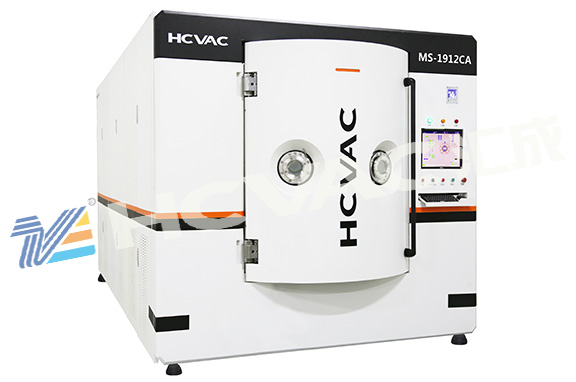There are many coating methods for pvd coating machines. Different workpieces and film layers are plated, and different process requirements require different coating methods. The commonly used coating processes on the market include vacuum evaporation, sputtering, and ion plating (hollow cathode). Ion plating, hot cathode ion plating, arc ion plating, reactive reactive ion plating, radio frequency ion plating, DC discharge ion plating), these common coating processes are often used in daily life. Below, the editor of Huicheng Vacuum will explain to you Let’s introduce it in detail:

The first type: electron beam evaporation:
Electron beam evaporation uses a focused electron beam to heat the evaporation source, causing it to evaporate and deposit on the surface of the substrate to form a thin film. Features: Vacuum environment; the evaporation source material needs to be heated and melted; the base material is also at a higher temperature; a magnetic field is used to control the evaporated gas to control the thickness of the coating.
Second type: sputter deposition
Sputtering is a thin film deposition technology associated with gas glow discharge. There are many sputtering methods, including DC sputtering, RF sputtering and reactive sputtering, etc. The most commonly used ones are magnetron sputtering, intermediate frequency sputtering, DC sputtering, RF sputtering and ion beam sputtering. Features: The vacuum chamber is filled with inert gas (such as argon) required for discharge. Under the action of a high-voltage electric field, the gas molecules are ionized to produce a large number of positive ions. The charged ions are accelerated by a strong electric field, forming a high-energy ion flow that bombards the evaporation source material (called the target). Under ion bombardment, atoms of the evaporation source material will leave the solid surface, sputter onto the substrate at high speed and deposit into a thin film.
The third type: RF (radio frequency) sputtering
The frequency used by RF sputtering is about 13.56MHz. It does not require a hot cathode and can be sputtered at lower air pressure and lower voltage. RF sputtering can not only deposit metal films, but also insulating dielectric films of a variety of materials, so it has a wide range of applications.
The fourth type: arc ion plating
Cathodic arc technology uses low voltage and high current to ionize the target material into an ion state under vacuum conditions, thereby completing the deposition of thin film materials. This technology has a higher ionization rate and better thin film performance.
The fifth type: filter cathode arc
Filtered cathodic arc (FCA) is equipped with a high-efficiency electromagnetic filtration system, which can filter out macroscopic large particles in the plasma generated by the arc source. Therefore, the prepared film is very dense, flat and smooth, has good corrosion resistance, and is integrated with the body. Very strong.
Type Six: Ion Beam
Ion beam processing is performed under vacuum conditions. An electron beam is first generated by an electron gun and then introduced into an ionization chamber that has been evacuated and filled with inert gas to ionize the low-pressure inert gas. The cations are extracted from the negative electrode and undergo steps such as acceleration and clustering to obtain ions with a certain speed and are projected onto the surface of the material, resulting in sputtering and injection effects. Since ions are positively charged and their mass is thousands or tens of thousands of times greater than electrons, the ion beam has greater impact kinetic energy than the electron beam and is processed by microscopic mechanical impact energy.
These six pvd coating machines coating processes are common in daily life and are the most widely used. They basically cover the entire coating industry coating process.



